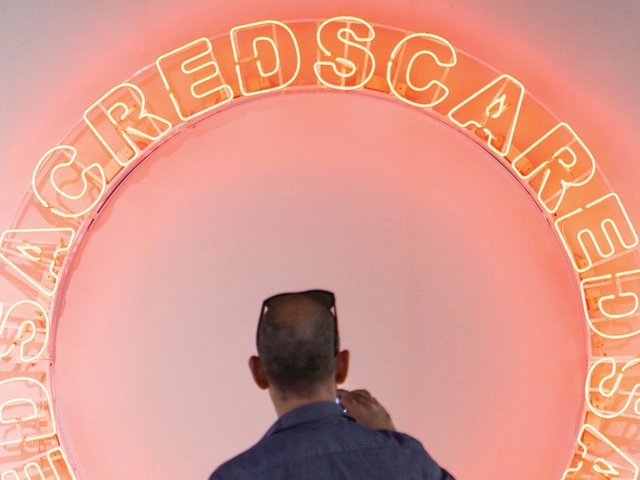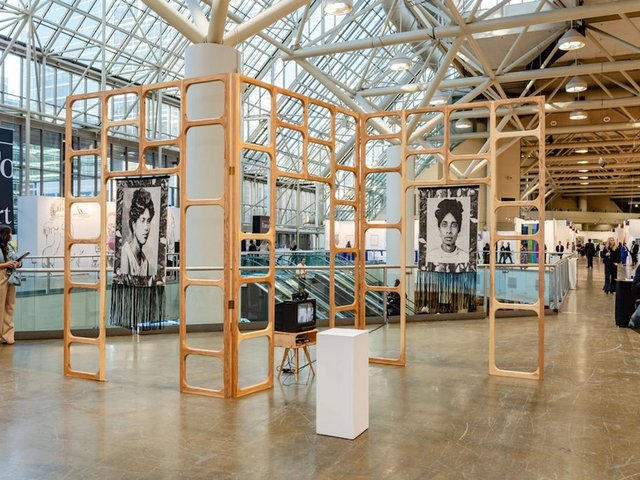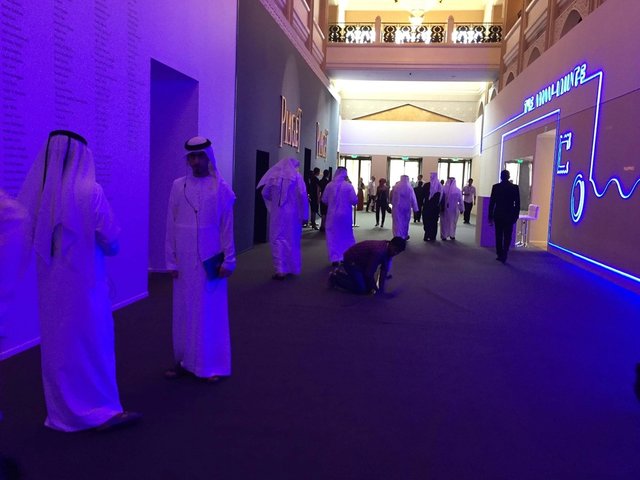As visitors begin their annual pilgrimage to Art Basel, they may be surprised by the extent to which they can be part of the art at the 46th edition of the fair, which opens to VIPs today. Experiences range from reclining in a hammock to enjoying an ice cream. Just as in contemporary art museums, no art fair feels complete without a participatory work or two.
At Unlimited, which opened to VIPs yesterday, Opavivará, a collective from Rio de Janeiro, is encouraging visitors to create their own tea blends and rest in hammocks (Formosa Decelerator, 2014; A Gentil Carioca, U31). The collective is also offering shots of alcohol at A Gentil Carioca’s stand in the main fair (S18). Back at Unlimited, David Shrigley’s Life Model (2012; Stephen Friedman Gallery, U62) invites viewers to sketch an oversized micturating mannequin.
For Parcours—a programme of site-specific works around the Münsterplatz that opens on Wednesday—the artist Davide Balula and a Michelin-starred chef have developed four flavours of ice cream that will be served around Basel (Painting the roof of your mouth [Ice Cream], 2015, Galerie Frank Elbaz). In the Messeplatz, Rirkrit Tiravanija’s Do we dream under the same sky (2015) aims to encourage conversation and provide al fresco refreshment—weather permitting.
A generation of artists who make visitors integral to their work are having their day in art galleries across the world. Carsten Höller’s Decision (until 6 September) opened at London’s Hayward Gallery last week, featuring the artist’s trademark sculpture-slides. Liam Gillick’s All-Imitate-Act (until 23 June)—panels with holes for visitors to stick their heads through—is at the Stedelijk Museum in Amsterdam. Philippe Parreno’s solo show at New York’s Park Avenue Armory (until 2 August) includes a moving sculpture on which visitors can sit, and Moscow’s Garage Museum of Contemporary Art, which opened last week, includes an interactive installation by Tiravanija, complete with ping-pong tables. “We have moved away from the idea of an art object as an isolated thing,” says Ralph Rugoff, the director of the Hayward. “Art is now part of the system around it, which inevitably involves people.”
Experience economy
Experiential art may be fashionable, but it is not exactly new. Dealers and curators trace its roots back to Dadaism, Minimalism, the Fluxus movement and—as ever—Marcel Duchamp. Witness the re-creation of the Swiss artist Dieter Roth’s bar in Les Trois Rois hotel in Basel this week (Hauser & Wirth, D10); the work was first conceived in the 1980s. What is new, however, is the “proximity of participatory works to the market”, says Oscar Humphries of Stephen Friedman Gallery (L11).
It is difficult to separate the popularity of such works from the so-called “experience economy”—a term coined in the late 1990s to describe how experiences are now products. This seems relevant to today’s art world, in which crowds will queue around the block to be touched by Marina Abramovic. In addition, “social media plays an important role. People are increasingly part of the story, which is understandably also reflected in some artists’ works,” says Beatrix Ruf, the director of the Stedelijk. “In a selfie generation, participatory art is like a gift,” says the artist Alicia Framis, who has filled a room in Basel’s cathedral with more than 100 previously banned books that she is inviting visitors to read (Room for forbidden books, 2014; Galería Juana de Aizpuru, in Parcours).
The nature of the potential buyers has fuelled the demand for participatory art. Although interactive works—like films, large-scale installations and performances—are still largely bought by institutions, the unprecedented growth of private museums around the world has widened the pool. Platforms to show ambitious works also serve the fair, by adding something new to a familiar mix. The nomadic performance show 14 Rooms was the highlight last year.
Theatre of life
Others describe this shift as part of a more communal trend, one that is distorting the market’s mechanisms as the mega-collectors who defined Generation X perhaps begin to give way to the more generous-spirited millennials. “I love the idea that there is a move away from ownership and towards access,” says the art adviser Lisa Schiff. Indeed, in the arena of art commerce that is the main fair, participatory works are hard to come by.
One exception is at Esther Schipper gallery (S1), where Daniel Steegmann Mangrané is inviting fair-goers to squeeze their own juice—while surrounded by a distorting photographic filter—in Oranges Oranges 2 (Medium Lemon/Summer Blue) (2004). The artist describes this as “part of a huge performance, the integral theatre of a man’s life”.
Schiff acknowledges that part of her job is to create a market from what is seemingly its antithesis. “The question is,” she asks, “how to monetise ideas?” One way appears to reflect a changing art market: Balula’s ice-cream project has already been bought by its backer, Jérôme de Noirmont, who closed his gallery in 2013 and this year launched a business to support the production of contemporary art.
The artistic merits of squeezing oranges or making tea will surely be discussed over drinks in the Roth Bar this week. But for most, the question has ceased to be relevant. “There can be an anxiety about distinguishing art from entertainment,” says Rugoff, adding: “Shakespeare is entertaining—no one questions whether that’s art.”




